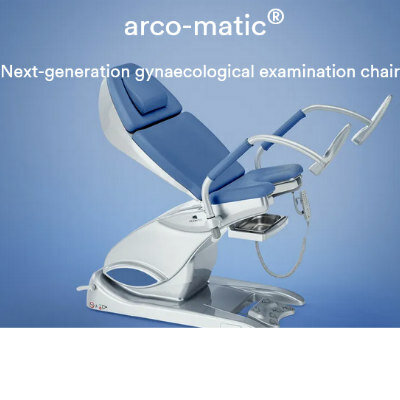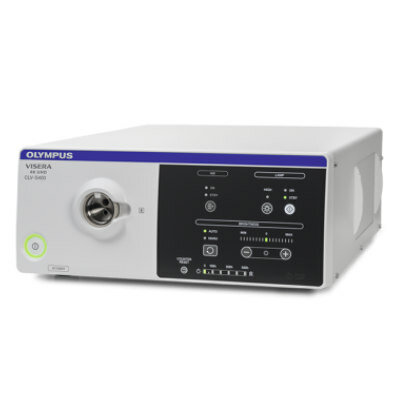Medical Disaster Drone Showcases Lifesaving Capabilities
|
By HospiMedica International staff writers Posted on 28 Dec 2016 |

Image: An advanced ambulance drone can help treat victims in disaster situations (Photo courtesy of WCUCOM).
New ambulance drones can support victims and rescue personnel during mass shootings, bombings, or other terrorist attacks.
Developed at the William Carey University College of Osteopathic Medicine (WCUCOM; Hattiesburg, MS, USA), the new drones are part of the ongoing Health Integrated Rescue Operations (HiRO) telemedical drone project. The ambulance drones are designed to carry telemedical packages to operators in adverse conditions, providing immediate and secure access to a physician on the other end of the screen to provide guidance amidst the chaos and confusion of a disaster situation. The telemedical packages can treat up to 100 people with significant to minor injuries.
To do so, the critical care kit includes Google Glass, which allows the wearer to be hands free and to move away from the drone while still maintaining audio and visual contact with the physician, who can provide simple, direct, and user friendly guidance to empower the provider and bystanders to save lives. The technology debuted in a simulated mass casualty scenario held during December 2016 at John Bell Airport (Bolton, MS, USA), before an audience that included Mississippi state governor Phil Bryant and representatives from the U.S. Department of Homeland Security, Federal law enforcement agencies, and the United Nations.
“Reaching the victims is the critical challenge in these situations. As an osteopathic physician, my goal was to find ways to help save lives. A medical drone is the bridge that delivers life-saving treatment directly to the victims, giving remote physicians eyes, ears, and voice to instruct anyone on site,” said drone co-developer Italo Subbarao, DO, senior associate dean at WCUCOM, an expert in disaster and emergency medicine.
“These drones have impressive lift and distance capability, and can be outfitted with a variety of sensors, such as infrared, to help locate victims,” said Dennis Lott, director of the unmanned aerial vehicle program at Hinds Community College (Raymond, MS, USA). “Working together, we're able to develop, test, and bring this technology to the field. It is just a matter of time before the drones are universally adopted for emergency and disaster response toolkits.”
Related Links:
William Carey University College of Osteopathic Medicine
Hinds Community College
Developed at the William Carey University College of Osteopathic Medicine (WCUCOM; Hattiesburg, MS, USA), the new drones are part of the ongoing Health Integrated Rescue Operations (HiRO) telemedical drone project. The ambulance drones are designed to carry telemedical packages to operators in adverse conditions, providing immediate and secure access to a physician on the other end of the screen to provide guidance amidst the chaos and confusion of a disaster situation. The telemedical packages can treat up to 100 people with significant to minor injuries.
To do so, the critical care kit includes Google Glass, which allows the wearer to be hands free and to move away from the drone while still maintaining audio and visual contact with the physician, who can provide simple, direct, and user friendly guidance to empower the provider and bystanders to save lives. The technology debuted in a simulated mass casualty scenario held during December 2016 at John Bell Airport (Bolton, MS, USA), before an audience that included Mississippi state governor Phil Bryant and representatives from the U.S. Department of Homeland Security, Federal law enforcement agencies, and the United Nations.
“Reaching the victims is the critical challenge in these situations. As an osteopathic physician, my goal was to find ways to help save lives. A medical drone is the bridge that delivers life-saving treatment directly to the victims, giving remote physicians eyes, ears, and voice to instruct anyone on site,” said drone co-developer Italo Subbarao, DO, senior associate dean at WCUCOM, an expert in disaster and emergency medicine.
“These drones have impressive lift and distance capability, and can be outfitted with a variety of sensors, such as infrared, to help locate victims,” said Dennis Lott, director of the unmanned aerial vehicle program at Hinds Community College (Raymond, MS, USA). “Working together, we're able to develop, test, and bring this technology to the field. It is just a matter of time before the drones are universally adopted for emergency and disaster response toolkits.”
Related Links:
William Carey University College of Osteopathic Medicine
Hinds Community College
Latest Health IT News
- Machine Learning Model Improves Mortality Risk Prediction for Cardiac Surgery Patients
- Strategic Collaboration to Develop and Integrate Generative AI into Healthcare
- AI-Enabled Operating Rooms Solution Helps Hospitals Maximize Utilization and Unlock Capacity
- AI Predicts Pancreatic Cancer Three Years before Diagnosis from Patients’ Medical Records
- First Fully Autonomous Generative AI Personalized Medical Authorizations System Reduces Care Delay
- Electronic Health Records May Be Key to Improving Patient Care, Study Finds
- AI Trained for Specific Vocal Biomarkers Could Accurately Predict Coronary Artery Disease
- First-Ever AI Test for Early Diagnosis of Alzheimer’s to Be Expanded to Diagnosis of Parkinson’s Disease
- New Self-Learning AI-Based Algorithm Reads Electrocardiograms to Spot Unseen Signs of Heart Failure
- Autonomous Robot Performs COVID-19 Nasal Swab Tests

- Statistical Tool Predicts COVID-19 Peaks Worldwide
- Wireless-Controlled Soft Neural Implant Stimulates Brain Cells
- Tiny Polymer Stent Could Treat Pediatric Urethral Strictures
- Human Torso Simulator Helps Design Brace Innovations
- 3D Bioprinting Rebuilds the Human Heart
- Nanodrone Detects Toxic Gases in Hazardous Environments
Channels
Artificial Intelligence
view channel
AI-Powered Algorithm to Revolutionize Detection of Atrial Fibrillation
Atrial fibrillation (AFib), a condition characterized by an irregular and often rapid heart rate, is linked to increased risks of stroke and heart failure. This is because the irregular heartbeat in AFib... Read more
AI Diagnostic Tool Accurately Detects Valvular Disorders Often Missed by Doctors
Doctors generally use stethoscopes to listen for the characteristic lub-dub sounds made by heart valves opening and closing. They also listen for less prominent sounds that indicate problems with these valves.... Read moreSurgical Techniques
view channel
Hydrogel-Based Miniaturized Electric Generators to Power Biomedical Devices
The development of engineered devices that can harvest and convert the mechanical motion of the human body into electricity is essential for powering bioelectronic devices. This mechanoelectrical energy... Read moreWearable Technology Monitors and Analyzes Surgeons' Posture during Long Surgical Procedures
The physical strain associated with the static postures maintained by neurosurgeons during long operations can lead to fatigue and musculoskeletal problems. An objective assessment of surgical ergonomics... Read more.jpg)
Custom 3D-Printed Orthopedic Implants Transform Joint Replacement Surgery
The evolving field of 3D printing is revolutionizing orthopedics, especially for individuals requiring joint replacement surgeries where traditional implants fail to provide a solution. Although most people... Read more
Cutting-Edge Imaging Platform Detects Residual Breast Cancer Missed During Lumpectomy Surgery
Breast cancer is becoming increasingly common, with statistics indicating that 1 in 8 women will develop the disease in their lifetime. Lumpectomy remains the predominant surgical intervention for treating... Read morePatient Care
view channel
Surgical Capacity Optimization Solution Helps Hospitals Boost OR Utilization
An innovative solution has the capability to transform surgical capacity utilization by targeting the root cause of surgical block time inefficiencies. Fujitsu Limited’s (Tokyo, Japan) Surgical Capacity... Read more
Game-Changing Innovation in Surgical Instrument Sterilization Significantly Improves OR Throughput
A groundbreaking innovation enables hospitals to significantly improve instrument processing time and throughput in operating rooms (ORs) and sterile processing departments. Turbett Surgical, Inc.... Read more
Next Gen ICU Bed to Help Address Complex Critical Care Needs
As the critical care environment becomes increasingly demanding and complex due to evolving hospital needs, there is a pressing requirement for innovations that can facilitate patient recovery.... Read moreGroundbreaking AI-Powered UV-C Disinfection Technology Redefines Infection Control Landscape
Healthcare-associated infection (HCAI) is a widespread complication in healthcare management, posing a significant health risk due to its potential to increase patient morbidity and mortality, prolong... Read moreHealth IT
view channel
Machine Learning Model Improves Mortality Risk Prediction for Cardiac Surgery Patients
Machine learning algorithms have been deployed to create predictive models in various medical fields, with some demonstrating improved outcomes compared to their standard-of-care counterparts.... Read more
Strategic Collaboration to Develop and Integrate Generative AI into Healthcare
Top industry experts have underscored the immediate requirement for healthcare systems and hospitals to respond to severe cost and margin pressures. Close to half of U.S. hospitals ended 2022 in the red... Read more
AI-Enabled Operating Rooms Solution Helps Hospitals Maximize Utilization and Unlock Capacity
For healthcare organizations, optimizing operating room (OR) utilization during prime time hours is a complex challenge. Surgeons and clinics face difficulties in finding available slots for booking cases,... Read more
AI Predicts Pancreatic Cancer Three Years before Diagnosis from Patients’ Medical Records
Screening for common cancers like breast, cervix, and prostate cancer relies on relatively simple and highly effective techniques, such as mammograms, Pap smears, and blood tests. These methods have revolutionized... Read morePoint of Care
view channel
Critical Bleeding Management System to Help Hospitals Further Standardize Viscoelastic Testing
Surgical procedures are often accompanied by significant blood loss and the subsequent high likelihood of the need for allogeneic blood transfusions. These transfusions, while critical, are linked to various... Read more
Point of Care HIV Test Enables Early Infection Diagnosis for Infants
Early diagnosis and initiation of treatment are crucial for the survival of infants infected with HIV (human immunodeficiency virus). Without treatment, approximately 50% of infants who acquire HIV during... Read more
Whole Blood Rapid Test Aids Assessment of Concussion at Patient's Bedside
In the United States annually, approximately five million individuals seek emergency department care for traumatic brain injuries (TBIs), yet over half of those suspecting a concussion may never get it checked.... Read more
New Generation Glucose Hospital Meter System Ensures Accurate, Interference-Free and Safe Use
A new generation glucose hospital meter system now comes with several features that make hospital glucose testing easier and more secure while continuing to offer accuracy, freedom from interference, and... Read moreBusiness
view channel
Johnson & Johnson Acquires Cardiovascular Medical Device Company Shockwave Medical
Johnson & Johnson (New Brunswick, N.J., USA) and Shockwave Medical (Santa Clara, CA, USA) have entered into a definitive agreement under which Johnson & Johnson will acquire all of Shockwave’s... Read more














